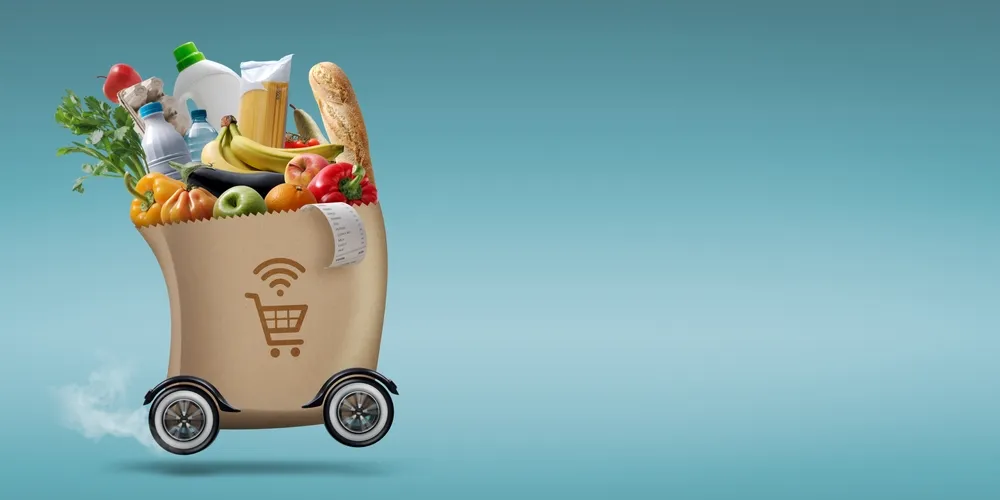Market News
Who’s leading the Quick Commerce market in India? A deep dive into Zomato, Swiggy and Zepto
.png)
4 min read | Updated on November 08, 2024, 11:56 IST
SUMMARY
Zomato’s Blinkit leads India's quick commerce with a 40% market share, leveraging 639 dark stores. Swiggy and Zepto trail behind, yet drive rapid expansion.
Stock list

Zomato leads with dominant market share in the quick commerce segment, followed by Swiggy's Instamart and Zepto
In the age of social media, trends shift rapidly, with new ones constantly emerging in the market. Beyond AI and EV trends, a new one making headlines is "quick commerce" an industry valued at $3.35 billion as of 2024 (expected to be $9.95 billion by 2029). If you’re unfamiliar, it is similar to e-commerce, but with a key difference: rapid delivery. In India, industry players have set the benchmark at around 10 minutes.
Who has the highest market share?
According to Statista, the leader is Zomato's Blinkit with a market share of roughly 40%, followed by Swiggy's Instamart at approximately 32%. The rest is held by Zepto.
Please note that these market share numbers are approximate, based on figures from the beginning of the year. However, Zepto has managed to double its market share since 2022.
Understanding dark stores and their importance
A "dark store" is a warehouse-style facility optimized for fast order fulfilment. These stores aren’t open to the public; they solely process online orders. Dark stores leverage technology heavily and are strategically located to serve consumers efficiently.
There’s a strong correlation between the number of strategically placed dark stores and a company’s market share. For instance, being in an area without a dark store can limit a quick commerce player's potential revenue.
How many dark stores are operated by each of these companies?
Zomato operates the highest number of dark stores, with around 639 as of Q1FY25. Swiggy follows with approximately 557 (per Swiggy's DRHP as of June). Although Zepto, being unlisted, has not disclosed official numbers, estimates suggest it has around 400 active dark stores.
Zomato’s active dark stores reached 791 in Q2FY25, with a target of 2,000 by the end of 2026. By FY25’s end, the company aims to reach 1,000 stores, as noted in their October 2024 conference call.
Zepto, meanwhile, plans to double its store count to 700 by March 2025, as CEO Aadit Palicha mentioned in an interview.
Comparing Key Metrics
Regarding financials, as of Q1FY25, Zomato’s quick commerce gross order value (GOV) stood at ₹4,923 crore, higher than Swiggy’s ₹2,724 crore. According to The Hindu Business Line, Zepto’s annualized GOV is around $1.2 billion (~₹9,960 crore), which on a quarterly basis is closer to Swiggy’s GOV, at roughly ₹2,500 crore.
Note that we've used Q1FY25 data for Zomato to ensure consistent comparison.
Average order value
In Q1FY25, Zomato's average order value (AOV) was ₹625, Swiggy’s was ₹487, and Zepto’s was estimated to range between ₹430-₹470.
How many orders do these players handle daily?
Each company processes an estimated 500,000 to 1,000,000 orders per day. Zepto is likely at the lower end of this range, while Zomato’s Blinkit is at the higher end.
Is any one of them profitable?
Zomato’s quick commerce business is near breakeven on an adjusted EBITDA basis. Swiggy and Zepto, however, are still incurring losses. Nevertheless, Zepto reports that 75% of its stores are EBITDA positive, supported by strong demand. A new store now takes about six months to become profitable.
Why is Zomato ahead of the competition?
It’s primarily due to a higher number of orders, shorter delivery times, and a larger network of stores. Mathematically and logically, this positions them at the forefront. However, it will be interesting to see which company emerges as the long-term leader, as several other players, such as Flipkart Minutes and BBNow, have entered this industry.
About The Author
Next Story

